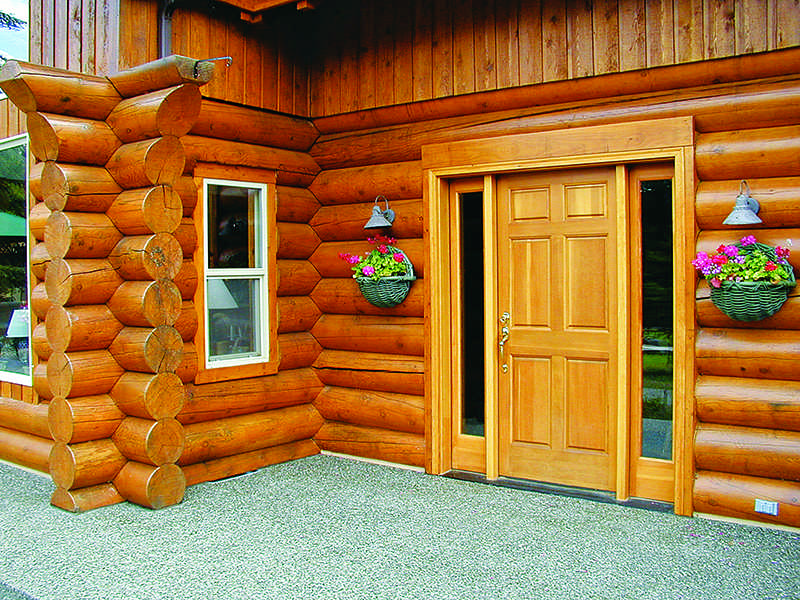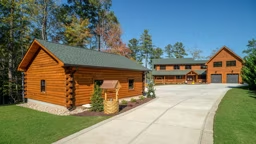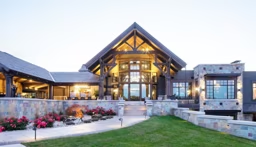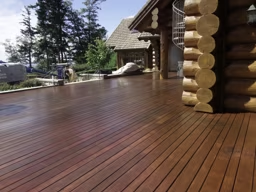By Paul Peebles  My family has a place in Middle Tennessee that we’ve owned since 1987. We call it simply, “The Farm.” Twenty years ago this December, the 100-plus-year-old log cabin original to the property burned to the ground. Being avid outdoorsmen and loving the log home lifestyle, my brothers and I were eager to get it back. So we built a modern but rustic log house to replace it. At the time, I had some experience building and restoring log homes and had recently begun working for a manufacturer of log home sealants and maintenance products.
My family has a place in Middle Tennessee that we’ve owned since 1987. We call it simply, “The Farm.” Twenty years ago this December, the 100-plus-year-old log cabin original to the property burned to the ground. Being avid outdoorsmen and loving the log home lifestyle, my brothers and I were eager to get it back. So we built a modern but rustic log house to replace it. At the time, I had some experience building and restoring log homes and had recently begun working for a manufacturer of log home sealants and maintenance products.
Since one of my brothers is a lawyer and the other is an artist, it fell upon me to design the home and do most of the construction. Most of my customers were (and still are) manufacturers and builders of log homes. They explained to me how log homes are constructed, but they taught me an even more important lesson – to protect them right and do it right from the start. I took these experts’ advice to heart, and I’m proof that their advice works, because after 20 years of log home ownership, I am about to re-stain one side of our cabin for the very first time.
You might ask me how I did it. The answer is really fairly simple when you understand a few things about wood and the forces of nature that affect it. Logs can last virtually forever if properly protected from sun, rain and insects. Wood exposed to those same elements will require frequent maintenance to maintain its beauty. Design, site positioning and routine log home maintenance are the three key elements in building a beautiful home and keeping it that way.
Design
The design of your home should first and foremost take into account the living spaces you want to occupy, but also should ensure that you get the time to enjoy those living spaces by reducing maintenance on the exterior of the home. If you’re hoping for little to no log home maintenance and your design allows for it, build a covered porch all the way around your home. Or, at least build as many covered porches as you can. The idea here is to keep as much direct sunlight and rain away from your home’s exterior log walls. Let the manmade materials soak up the brunt of the abuse dished out by nature. They are engineered for it.
The design of your home should first and foremost take into account the living spaces you want to occupy, but also should ensure that you get the time to enjoy those living spaces by reducing maintenance on the exterior of the home. If you’re hoping for little to no log home maintenance and your design allows for it, build a covered porch all the way around your home. Or, at least build as many covered porches as you can. The idea here is to keep as much direct sunlight and rain away from your home’s exterior log walls. Let the manmade materials soak up the brunt of the abuse dished out by nature. They are engineered for it.
If the design does not allow for multiple porches, the next best thing is to incorporate wide overhangs or eaves on the roofline of your home. A 30-inch overhang, rather than the standard 16-inch used in stick-built construction, reduces sun exposure on the logs by 50 percent and rain exposure by as much as 70 percent. This simple step also can lengthen the longevity of stains and coatings and even reduce your energy bills in Southern climates. Gutters, where practical, are your next best friend, as they add an additional six inches of shade to your walls and prevent water from splashing back onto your home’s lower log courses.
Position
Where you place your home on your lot and how it will be oriented will have a major impact on your upkeep. You probably have a view to consider, and you will have to think about access, septic fields, trees, etc., but most people don’t consider the orientation of their home as a maintenance factor, and they should.
Positioning it correctly isn’t hard. Here’s how: Use a compass to orient your home. If you live in the Northern Hemisphere, the most brutal sun is always to the south and west. Make sure you orient the porches with wide overhangs toward those directions to create as much shade as possible. If design or other factors prevent you from facing your home a certain way, use existing trees to block sun from a south-facing wall, or plant trees that will filter UV rays in the future. Consider the patterns of the sun – not only at various times of day but during different seasons of the year — and use this knowledge when you are siting your house. Use your land’s natural topography to your advantage as a barrier to excessive sunshine. For instance, placing your house at the base of a knoll rather than on top of it will enable you to use your property to work as a sunshield.
Maintain
This is the part that intimidates a lot of people, but it won’t seem so scary if you understand a few simple rules. Think of it this way: The last time you bought a brand new car, you drove it home, to work, to the car wash, on vacation and to the garage to have the oil changed. Now think of building a new home. What did you do? If you’re like most people, you moved in, called the phone company, called the cable company, arranged for garbage pickup and had a party so your friends could see your gorgeous new abode. Then you lived there for five or 10 years until one day you noticed that the house looked a little dull, or the paint or stain was peeling in a few places, or that there were small trees growing out of your gutters. As soon as you buy anything that will be exposed to weather, you should start maintaining it, whether it is a car, a boat or a beautiful new log home. Putting off that maintenance will cause repairs that far exceed the cost or the inconvenience of caring for it in the first place. You’d never buy a new car and drive it 50,000 miles without an oil change, but many people build a new home and do little or no maintenance for 10 years or more. And any home – not just a log home – must be maintained.
Following this basic maintenance routine will help keep your log home in tiptop shape: Wash your home every year. This does not have to be a big production—simply spray it with a cleaner recommended by the manufacturer of the coatings on your home and then rinse it off. Use a pump sprayer to apply the cleaner, a soft bristle brush and a hose. After washing, inspect your home for peeling stain, torn sealants, and checks or cracks in the wood that need to be filled. Inspect for clogged gutters while you’re at it. Touch up any of the above areas that need to be addressed. Your log manufacturer or the stain provider can give you some guidance on how to do this and recommend products that are compatible with your coatings.
If you know in your heart that you probably are not going to do any of these things, then hire someone to do it for you. Be sure to use a person or service that maintains log homes for a living. These are usually NOT painters. Also, if you need to purchase maintenance products, use ones that are specifically developed for and tested on log homes. These are NOT found at “big box” home improvement stores.
I began by telling you about The Farm and how I finally have to stain it after 20 years. Here’s how I’ve made my finish last: Besides siting and designing it to minimize sun exposure, I wash it every other year, which takes about two hours. I’ve applied a clear maintenance coat to the south and west sides twice, which took about another two hours. I clean my gutters twice a year and I have repaired minor damage done by carpenter bees and squirrels. All told, I’ve invested less than 40 hours of work in two decades — not much time at all, really, to ensure that our cabin is a place my family enjoys now and hopefully will continue to enjoy for decades to come.
Paul Peebles is the National Commercial Sales Director for Perma-Chink Systems, Inc. He’s worked in the log home industry for 23 years and has helped thousands of people build, maintain and restore their dream log homes.











